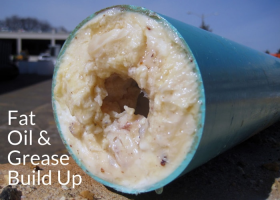Among plumbing notes on plans, MEP engineer's plans say "Waste from garbage disposers shall not drain to grease interceptor." Ergo double sink has one side going to grease trap, other side (w/GD) to sanitary drain.
Plumber says it's crazy, I am scratching my head.
What's the rationale for this?
Plumber says it's crazy, I am scratching my head.
What's the rationale for this?

